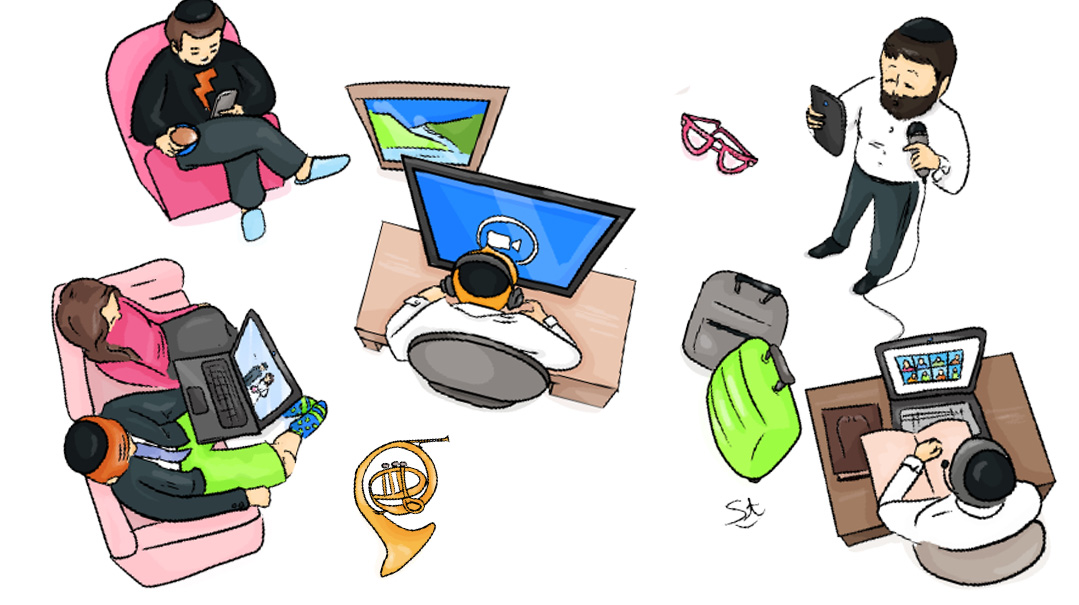A Year of Zoom

Freeze frames from a year of remote communication, virtual connections, and way too much time spent talking through screens

Illustrations: Esti Friedman
Most Miles Traveled
One day in May 2020, during the height of Zoom conferences around the world, I Zoomed a speech at 8 a.m. from my dining room in Kew Gardens, New York, to a lunch conference in London about emunah, where it was 1 p.m. Distance: 3,471 miles.
A few hours later, at 1 p.m., I Zoomed a lecture about shemiras halashon to Cape Town, South Africa, where it was 8 p.m. Distance: 6,778 miles.
That evening at 8 p.m., I Zoomed a conference about chesed for a brunch lecture in Melbourne, Australia, where it was 12 p.m. the next day. Distance: 10,360 miles.
In total, I traveled 20,609 miles from my dining room to give three lectures in three countries (England, South Africa, and Australia) in a single day. No jet lag, no masks, no airline meals. No complaints.
Round trip? 41,218 miles. After all, there’s no place like home.
Rabbi Paysach Krohn is a mohel, writer, and speaker.
Most Bittersweet Session
Reb Abish Eisen ztz”l, who passed away this Shevat, was a throwback to old Jerusalem. He existed in This World, yet he lived in the otherworldly dimension of Yerushalayim Shel Maalah, immersed in the wisdom of psak halachah and the study of Kabbalah. Reb Abish’s warmth, humility, and old-world charm endeared him to all, and many talmidim drew close to drink from his fountains of wisdom.
One talmid was a dear friend of mine: Tzvi. Much like Reb Abish, Tzvi kept his brilliant Talmudic prowess veiled by his radiant smile and gushing warmth. While we all knew of Tzvi’s stature as a tremendous talmid chacham with wonderful middos, some of us only learned of his Torah greatness after he left This World.
Only a short while before his tragic passing, Tzvi went to America for treatments, leaving his hopeful family in Eretz Yisrael. He celebrated the engagement of his son from his hospital bed. At the vort, a Zoom session was set up for him to watch from afar and for friends and family to wish him well. To everyone’s great surprise, Reb Abish — who avoided modern technology at any cost — approached the computer to wish mazel tov to Tzvi and give him chizuk. With his natural grace and glowing smile, he offered words of encouragement and blessing.
Then, as Reb Abish moved away from the screen, he paled and seemed to lose his composure.
Someone posited that it was an expression of his discomfort with using technology, the antithesis of his lofty existence. I disagreed. It was the pitiful plight of his beloved talmid that had left him shuddering, trembling, and pained.
Rabbi Akiva Fox teaches at Imrei Binah and Lev Aharon and is a writer and lecturer.
He lives in Ramat Eshkol, Jerusalem.
Oops! We could not locate your form.













